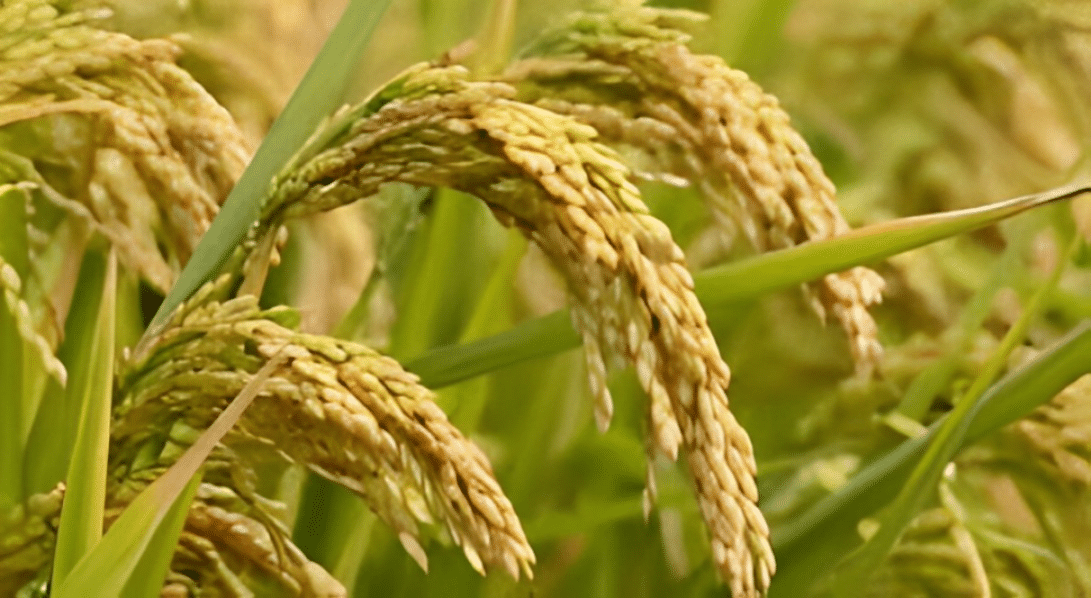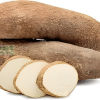
Maximizing Yields: Innovative Strategies for Rice Cultivation

Learn innovative strategies for Maximizing Yields: Innovative Strategies for Rice Cultivation in this informative article. Discover new techniques and technologies that can help increase productivity and efficiency in rice farming. Explore the latest research and best practices to optimize yields and improve profitability.
RICE
Local Names. Yor. Iresi; Ibo Osikapa; Hausa Shinkafa.
General. Rice requires good soil with plenty of moisture and hot sun. The crop has been much developed in recent years in West Africa by Agricultural Departments. In Nigeria, it has developed along big river valleys and inland swamps, but considerable upland rice is also grown in the Abeokuta area, Ondo Province, Benin Province, and the Cameroons.
Types and Varieties. Rice is grown in four ecological zones:
(a) The naturally flooded lands of the river flood plains and inland natural depressions.
(b) The irrigable lowlands.
(c) The uplands in high rainfall areas.
(d) The freshwater mangrove swamps.
Breeding programs are in progress to produce new varieties for these conditions. In the past the following varieties have been used for deep flooded lands- china, Mali Ongand Champa, but all are slightly too long season.
For irrigable lowlands and freshwater mangroves- BG79 (5 months), Toma 112 (6 months), KAV12 (7 months), and GEB24 (5½ months) are standard varieties. Some other varieties have shown promise. Mas 2401 is good where water supplies are good.
For upland conditions, Agbede mixed and two Agbede selections have been used and of other varieties “Jete” has shown promise. BG79 which is the most common variety grown is a medium-grained white rice.
Planting Date. Upland Types.
Planting is done with the regular early rains in April to May to ripen in August, or in August September to ripen earlier planting on of dry August weather is assured, the sw dope the better. The time of flood is important with Swamp rice Plant May-June to the river valleys. transplant July-August for most of the river valleys.
Spacings. 10 x 10 ins, or 12 x 12 ins. are best, sowing at stake with upland types, 6-9 seeds per stand. Swamp types are transplanted at 9 x 9 ins., 2-3 plants per stand.
Seed Rate. In Nursery. 200-250 lbs. paddy per acre. One acre of nursery will supply 10 acres of field. It is best not to sow too thickly to avoid Piricularia leaf spot.
In Field. At stake-30-40 lbs. per acre. Broadcast 40-50 lbs. per acre. Up to 100 lbs. per acre with drilling. Planting Depth. Seed 1-1 in. Seedlings 2-3 ins.
Germination. 4-5 days.
Transplant. 6-8 weeks from sowing in the nursery.
Flowering. According to Variety, 12-18 weeks from sowing. Maturation. 4-7½ months according to variety.
Fertilizers. Generally, marked increases in yields have been obtained in all Regions with the use of nitrogen and sometimes phosphate as fertilizers.
However, to obtain efficient use of fertilizers it is first necessary to control weeds.
Up to 300 lbs. sulfate of ammonia per acre has given economic returns.
Harvest. August for the early sown crop or November to January for the later sown crop.
Yields. Upland. Agbede-800-1,500 lbs. paddy per acre. Over 2,000 lbs. per acre has been obtained. G.79-As agbede or slightly higher. Swamp. G.79-2,000 lbs. up to 4,000 in ideal conditions. Yields of most varieties resemble G.79. Under 1,000 lbs. is very poor.
Hulling Percentage. 1,000 lbs. paddy yields 550-700 lbs. clean rice. Much depends on the milling efficiency and the amount of broken rice. Parboiling increases the milling percentage. The bran forms 10-12 percent and the husk 18-20 percent of the weight of the paddy.
Labour. Upland rice with hand labor used 85 man-days per acre, to produce clean paddy. Swamp rice with hand cultivation uses 110-140 man-days per acre.
Seed per lb. 15,000-20,000 per Ib.
Miscellaneous Figures. 239 cigarette tins heaped full weigh approx. 1 cwt.
Diseases and Pests.
Blast (Piricularia oryzae). This is a fungus disease causing longitudinal spots on the leaves. The spots are at first red then yellow. The stems break and the field looks as if it has been rolled. The disease is favored by nitrogenous manures.
Leaf Spot (Cercospora oryzae). Is generally not serious if plants are well grown. It is a fungus disease.
Leaf Blight (Helminthosporium spp.) causes spotting of the leaves but generally, no effort is made to control it.
Smut (Tilletia horrida). The grains are converted to a mass of black spores. Control is by seed treatment by soaking in percent formalin for ten minutes.
False Smut. This is not very important. Olive green masses of spores are formed in the ears. No control is practiced except to rogue and burn infected plants.
Stem Borers. These are larvae of moths. They live by burrowing in the stem of the plant, the top of which dies. No control is practiced except crop rotation.
Birds. Attack grain in the milky stage and cause severe damage. Bird-scarers are essential from flowering time onwards. Planting in large blocks facilitates communal scaring in village communities.
Rodents. These are important in the field. Fencing and trapping are essential where they are troublesome on upland farms.
Processing.
Parboiling. This process is used to toughen the grain prevent breakage during hulling, and loosen the husk. The usual method is to pour the paddy into the water and leave it to stand overnight. The water is then discarded and the paddy steamed over boiling water in the false-bottomed drum for about twenty minutes until the
glumes are well opened, and then dried in the shade. Some prefer to soak in cold water for about 36 hours before steaming. Drying must not be done in the sun as this cracks the grain. Steaming should be done in a container with a loose false bottom and the grain covered with sacking to keep in the steam. Avoid burning of the grain by flames up the outsides of the container. Keep the fire underneath.
Machinery. Paddy may be hulled or polished by machine after hulling by hand.
Machines will hull 350-600 lbs. paddy per hour or polish 600-1,200 lbs. hulled rice. They require 14-16 horsepower. Much smaller ones are available.
Weed Control. This is one of the most important factors in rice growing. New herbicides have made such control possible. Stam F. 34(3, 4 dichloro propion-anilide) gives good results particularly where water control is also available. It controls annual grasses and broad-leaved weeds and is best applied when weeds have germinated and reached the second and third leaf stage. Application is at the rate of 2 to 4 lbs. per acre in 30 gallons of water applied with knapsack sprayers and a hand boom. Reflooding of the paddies should be done 2-3 days after treatment. If sprayed from the air apply in 2-3 gallons water per acre.
FAQ
Q1. What are some local names for rice (Oryza sativa)? A1. Yoruba: Iresi; Igbo: Osikapa; Hausa: Shinkafa.
Q2. What are the general requirements for growing rice? A2. Rice requires good soil with plenty of moisture and ample sunlight.
Q3. What are the types of ecological zones in which rice is grown? A3. Rice is grown in four ecological zones: naturally flooded lands, irrigable lowlands, uplands in high rainfall areas, and freshwater mangrove swamps.
Q4. What are some standard varieties of rice recommended for different conditions? A4. Standard varieties include BG79, Toma 112, KAV12, and GEB24 for irrigable lowlands and freshwater mangroves, and Agbede mixed and “Jete” for upland conditions.
Q5. How is weed control typically managed in rice cultivation? A5. Weed control in rice cultivation is managed using herbicides such as Stam F. 34, which is effective against annual grasses and broad-leaved weeds.
Q6. What are the typical planting dates for upland rice types? A6. Upland rice is typically planted with the regular early rains in April to May to ripen in August, or in August to September for earlier ripening.
Q7. What are the recommended seed rates for rice cultivation?
A7. In the nursery, the recommended seed rate is 200-250 lbs. paddy per acre, while in the field, it varies from 30-40 lbs. per acre when planted at stake, to 40-50 lbs. per acre when broadcast.
Q8. How long does it take for rice seeds to germinate?
A8. Rice seeds typically germinate within 4-5 days after sowing.
Q9. What are some common diseases affecting rice crops?
A9. Common diseases affecting rice crops include Blast (Piricularia oryzae), Leaf Spot (Cercospora oryzae), Leaf Blight (Helminthosporium spp.), Smut (Tilletia horrida), and False Smut.
Q10. How is parboiling typically carried out in rice processing?
A10. Parboiling involves soaking the paddy in water overnight, then steaming it over boiling water in a container with a loose false bottom for about twenty minutes until the glumes are well opened, followed by drying in the shade.




Add comment
You must be logged in to post a comment.